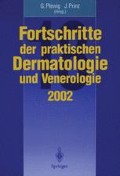Zusammenfassung
In den letzten 20 Jahren wurden in zunehmender Zahl Substanzen und Materialien entwickelt, die für eine dermale Augmentation verwendet werden können. Unter dermaler Augmentation ist die Korrektur oberflächlicher Hautunregelmäßigkeiten, die durch unterschiedliche Faktoren zustande gekommen sind, zu verstehen. Dabei werden die in Frage kommenden Substanzen sowohl intradermal als auch an die Grenze von Korium und Subkutis über wenig traumatisierende Injektionen eingebracht. Das Ziel der Behandlung ist die Glättung bestehender Hautunregelmäßigkeiten durch Substanzauffüllung, aber auch über eine Anregung von Kollagenneubildung. Der Vorteil dieses Behandlungsverfahrens ist in der Vermeidung größerer chirurgischer Eingriffe zu sehen und gleichermaßen darin, dass der gewünschte Ausgleichseffekt in der Regel sofort zu erzielen ist. Demzufolge sind die Erwartungen an die verwendeten Substanzen hoch gesteckt, insbesondere deshalb, da keine krankhaften Veränderungen therapiert werden, der Behandlungsschwerpunkt somit im korrektiv-ästhetischen Bereich liegt und der gewünschte Erfolg durch ein Minimum an behandlungsbedingten Komplikationen gemessen wird.
Access this chapter
Tax calculation will be finalised at checkout
Purchases are for personal use only
Preview
Unable to display preview. Download preview PDF.
Literatur
Alster TS, West TB (2000) Human-derived and new synthetic injectable materials for soft-tissue augmentation: current status and role in cosmetic surgery. Plast Reconstr Surg105: 2015–2525
Ashinoff R (2000) Overview: soft-tissue augmentation. Clin Plast Surg 27: 479–487
Clark DP, Hanke CW, Swanson NA (1989) Dermal implants: safety of products injected for soft tissue augmentation. J Am Acad Dermatol 21: 992–998
Cooperman LS, Mackinnon V, Bechler G, Pharris BB (1985) Injectable collagen: a six-year clinical investigation. Aesth Plast Surg 9: 145–151
Cucin R, Barek D (1983) Complications of injectable collagen implants. Plast Reconstr Surg 71: 731– 734
Di Pietro A, Di Sante G (2001) Recovery of skin elasticity and turgor by intradermal injection of hyaluronic acid by the cross-linked technique. Ital Dermatol Venerol 136: 187–194
Duranti F, Salti G, Bovani B, Alandra M, Rosati ML (1998) Injectable hyaluronic acid gel for soft-tissue augmentation. Dermatol Surg 24: 1317–1325
Joop TA (1999) Therapeutische Möglichkeiten bei HAART bedingter Lipoatrophie des Gesichts. In: Jäger H (Hrsg) AIDS und HIV-Infektion. Ecomed, Landsberg, V- 17.2, 1 - 5
Klein AW, Rish DC (1987) Injectable collagen: an adjunct to facial plastic surgery. Facial Plast Surg 4: 87 - 92
Klein AW (1989) In favour of double testing. J Dermat Surg Oncol 15: 263–268
Lowe NJ, Maxwell CA, Lowe P, Duick MG, Shah K (2001) Hyaluronic acid skin fillers: adverse reactions and skin testing. J Am Acad Dermatol 45: 930–933
Lupton JR, Alster TS (2000) Cutaneous hypersensitivity reaction to injectable hyaluronic acid gel. Dermatol Surg 26: 135–137
Micheels P (2001) Human antihyaluronic acid antibodies: is it possible? Dermatol Surg 27: 185–191
Piacquadio D, Jarcho M, Goltz R (1997) Evaluation of hylan B gel as a soft-tissue augmentation implant material. J Am Acad Dermatol 36: 544–549
Schurig V, Konz B, Ring J, Dorn M (1986) Granulombildung an Test- und Behandlungsstellen durch intrakutan verabreichtes injizierbares Kolalagen. Hautarzt 37: 42–45
Spenlehaner G, Vert M, Benoit JP, Boddaert A (1989) In vitro and in vivo degradation of poly (D, L lactide-glycolide) type microspheres made by solvent evaporation method. Biomaterials 10: 557–563
Editor information
Editors and Affiliations
Rights and permissions
Copyright information
© 2003 Springer-Verlag Berlin Heidelberg
About this paper
Cite this paper
Konz, B. (2003). Dermale Augmentation: Erwartungen und Wirklichkeit. In: Plewig, G., Prinz, J. (eds) Fortschritte der praktischen Dermatologie und Venerologie. Fortschritte der praktischen Dermatologie und Venerologie, vol 18. Springer, Berlin, Heidelberg. https://doi.org/10.1007/978-3-642-55661-6_38
Download citation
DOI: https://doi.org/10.1007/978-3-642-55661-6_38
Publisher Name: Springer, Berlin, Heidelberg
Print ISBN: 978-3-540-43948-6
Online ISBN: 978-3-642-55661-6
eBook Packages: Springer Book Archive

